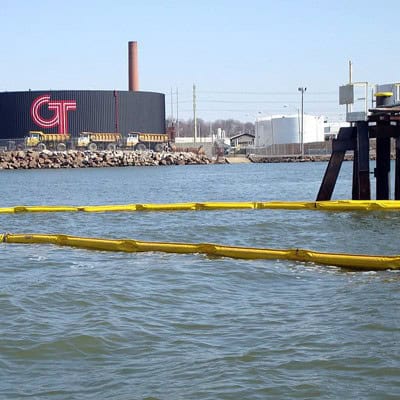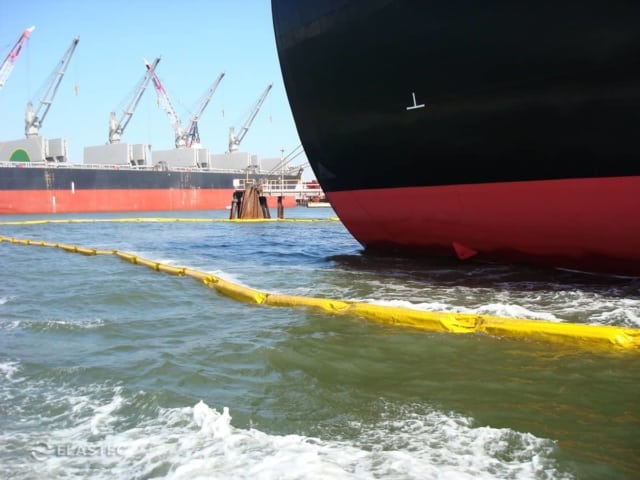Oil spills present a significant environmental challenge, especially when they occur in fast-flowing water. These spills can spread quickly, affecting wildlife and ecosystems, and complicating the cleanup process. In these situations, oil absorbent booms are vital tools that help manage and contain the spill. This article will explore the role of oil absorbent booms, how they function in fast-flowing water, and why they are an essential component of oil spill response efforts.
Understanding Oil Absorbent Booms
Oil absorbent booms are long, cylindrical barriers made from materials designed to absorb oil while repelling water. These booms are strategically placed on the water’s surface to contain and absorb oil spills, preventing further spread.
Components of Oil Absorbent Booms
Oil absorbent booms consist of several key components:
- Outer Fabric: The outer layer is typically made of a durable, water-resistant material that allows oil to pass through while keeping water out.
- Filling Material: Inside the boom is a highly absorbent material, often polypropylene, which can soak up large quantities of oil.
- Connectors: These allow multiple booms to be linked together, forming a continuous barrier across the water’s surface.
Types of Oil Absorbent Booms
There are different types of oil absorbent booms designed for specific conditions:
- Self-Inflating Booms: These booms automatically inflate upon contact with water, making them easy to deploy quickly.
- Static Booms: Rigid booms designed for use in calm or slow-moving waters.
- Dynamic Booms: Flexible and adaptable, these booms are suitable for fast-flowing waters.

Deploying Oil Absorbent Booms in Fast-Flowing Water
Deploying oil absorbent booms in fast-flowing water requires careful planning and execution to be effective. The speed and direction of the water can make containment challenging, but with the right approach, these booms can significantly reduce the impact of an oil spill.
Strategic Placement
The first step in deploying booms in fast-flowing water is to determine the ideal placement. Booms should be positioned downstream of the spill to intercept the oil as it moves with the current. In some cases, booms can be set up in a chevron or “V” shape, directing the oil towards a collection point where it can be removed from the water.
Anchoring Booms
Proper anchoring is crucial to ensure that the booms remain in place despite strong currents. Anchors or weights are often used to secure the booms at strategic points. Additionally, booms may be tied to stable structures, such as piers or bridges, to prevent them from drifting away.
Monitoring and Adjusting
Once deployed, booms must be monitored closely to ensure they are functioning as intended. Crews may need to adjust the position or anchoring of the booms to account for changes in water flow or oil movement. Regular monitoring also helps identify when booms become saturated and need to be replaced.
Effectiveness of Oil Absorbent Booms in Fast-Flowing Water
Oil absorbent booms are effective tools for managing oil spills in fast-flowing water, but their success depends on several factors:
Absorption Capacity
The primary function of oil absorbent booms is to absorb oil from the water’s surface. The absorption capacity of the booms is a critical factor in their effectiveness. High-quality booms with dense, absorbent filling can capture more oil and require less frequent replacement.
Durability and Design
Durability is essential for booms used in fast-flowing water. The outer fabric must withstand strong currents and potential abrasion from debris. The design of the boom also plays a role; booms that can flex and adapt to water movement are better suited for dynamic environments.
Integration with Other Response Efforts
While oil absorbent booms are an important tool, they are most effective when used alongside other response efforts. Skimmers, vacuums, and other oil recovery equipment can be used to remove oil collected by the booms, ensuring a more comprehensive cleanup.

Challenges and Considerations
Deploying oil absorbent booms in fast-flowing water comes with challenges:
Environmental Factors
Weather conditions, such as wind and rain, can affect boom deployment and performance. These factors must be considered when planning and executing a response.
Limited Absorption
Boons have a finite absorption capacity. Once they become saturated, they must be replaced promptly to continue effective containment and absorption.
Cost and Resource Allocation
Implementing a boom deployment strategy can be costly and resource-intensive, requiring significant manpower and materials. Proper planning and resource management are essential for successful execution.
Conclusion
Oil absorbent booms are a critical component of oil spill response, especially in fast-flowing water. By understanding how these booms work and the best practices for deployment, responders can effectively manage spills and minimize environmental impact. While challenges exist, the strategic use of oil absorbent booms, combined with other cleanup efforts, can lead to successful containment and recovery.
By choosing the right type of boom and deploying it strategically, environmental responders can significantly mitigate the effects of oil spills, protecting ecosystems and wildlife from harm. As technology and materials continue to advance, the effectiveness and efficiency of oil absorbent booms in fast-flowing water will only improve, making them an indispensable tool in the fight against oil pollution.
Shop at Absorbents Online for Oil Absorbent Booms
Are you prepared for potential oil spills? Ensure you have the right tools at your disposal by shopping at Absorbents Online. Our high-quality oil absorbent booms are designed to effectively manage spills in fast-flowing water, providing you with the reliability and performance you need. Don’t wait for an emergency—visit our website today to explore our range of products and make your purchase. Protect the environment and wildlife by being proactive in your spill response efforts!